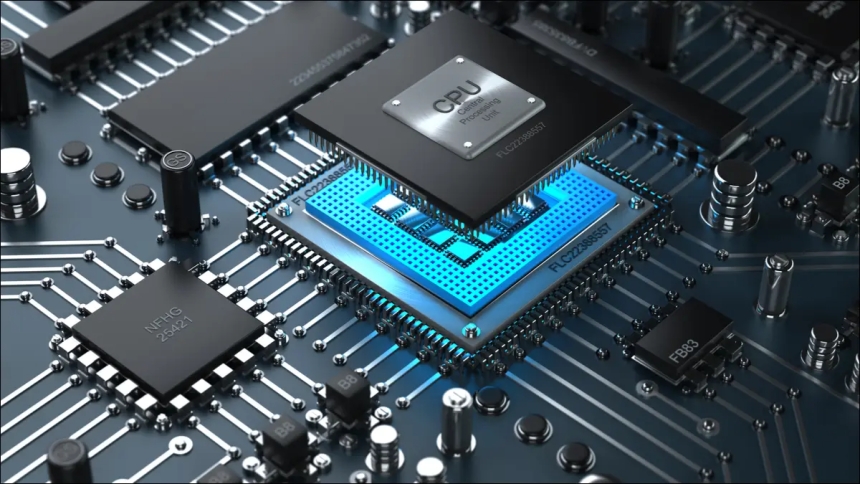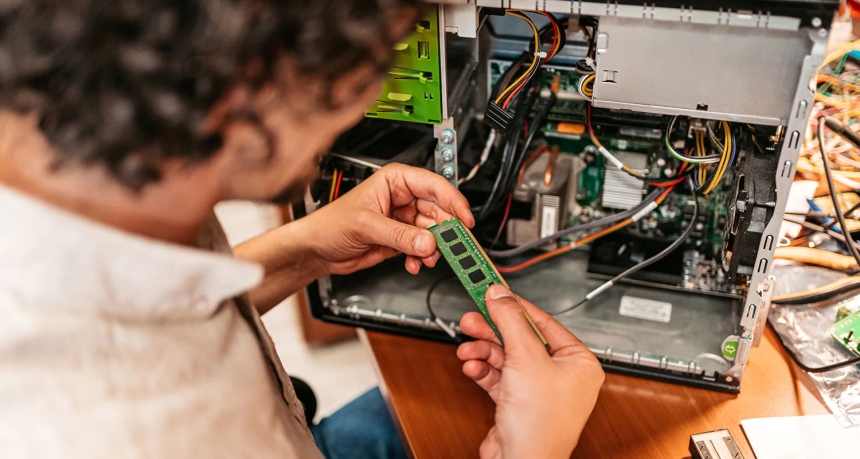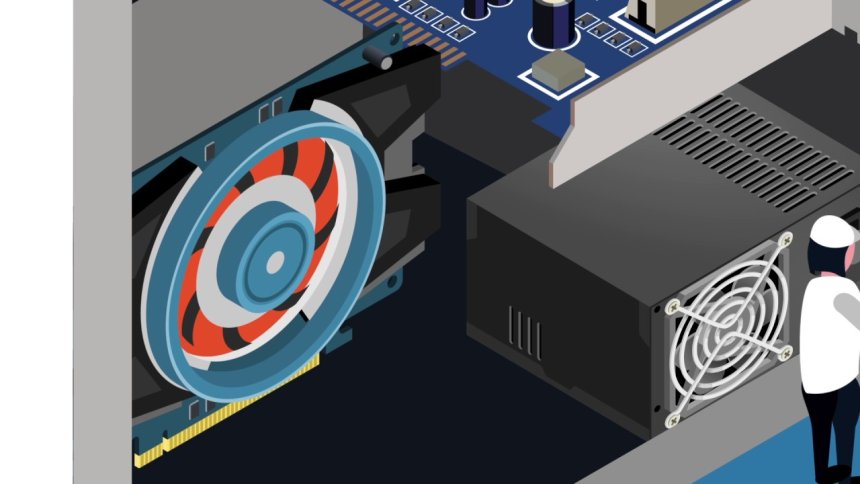Understanding CPU Speed: Why is it Important?
In our fast-paced digital world, computer speed is crucial. At the heart of this speed is the central processing unit (CPU), the component responsible for executing instructions and processing data. Whether you’re a gamer, professional, or casual user, you’ve likely wondered, “What is a good processor speed?” or “What’s a good CPU speed for gaming?” This article will demystify processor speeds and help you understand what to look for in a CPU.
What is Processor Speed?

Components of a computer processor
The processor of a typical computer consists of several key components that work together to execute instructions and perform calculations. These components include:
- Control unit (CU): The control unit manages and coordinates the CPU’s operations. It fetches instructions from memory, decodes them, and controls the data flow between the CPU and other components.
- Arithmetic logic unit (ALU): The ALU performs arithmetic and logical operations on data. It can perform basic arithmetic operations (addition, subtraction, multiplication, division) and logical operations (AND, OR, NOT) used in decision-making and data manipulation.
- Registers: Registers are small, high-speed memory units located inside the CPU. They temporarily hold data, instructions, and memory addresses that the CPU is processing. Registers include the instruction register (IR), program counter (PC), and general-purpose registers (such as the accumulator and index registers).
- Cache: Cache memory is a small, high-speed memory located directly on the CPU chip. It stores frequently accessed data and instructions to reduce the time needed to access information from the slower main memory (RAM). Cache memory helps improve overall system performance by providing faster access to critical data.
- Control bus: The control bus is a set of electrical pathways that carry control signals between the CPU and other components of the computer system. Control signals include commands for reading and writing data, initiating memory transfers, and controlling instruction flow.
- Data bus: The data bus is a set of electrical pathways that carry data between the CPU, memory, and other devices connected to the computer system. It allows the CPU to transfer data to and from memory, input/output devices, and other peripherals.
- Clock generator: The clock generator produces electrical signals called clock pulses that synchronize the timing of operations within the CPU. The clock speed, measured in hertz (Hz) or gigahertz (GHz), determines how quickly the CPU executes instructions and processes data.
What Makes a Good CPU Speed?
- For general use: A CPU speed of 1.6 GHz to 2.5 GHz is typically sufficient for everyday tasks like web browsing, word processing, and basic multimedia.
- For gaming: Gamers often ask, “What’s a good CPU speed for gaming?” Generally, a speed of 3.5 GHz to 4.0 GHz is considered good for gaming, but single-thread performance is more important than raw speed.
- For professional use: Content creators, data analysts, and other professionals might need speeds of 4.0 GHz and above, depending on their specific applications.

Processor Speed for Laptops vs Desktops
What is a Good Processor Speed for a Laptop?
- A speed of 1.6 GHz to 2.5 GHz is good for basic tasks. Most laptops on the market are equipped with dual-core processors, which are suitable for everyday users.
- 2.5 GHz to 3.5 GHz is suitable for most users, including light gamers.
- 3.5 GHz and above is ideal for gamers and professionals.
Desktop CPU Speeds
- 2.5 GHz to 3.5 GHz is good for everyday use
- 3.5 GHz to 4.0 GHz is great for gaming and more demanding tasks
- 4.0 GHz and above is excellent for high-performance needs
Beyond Clock Speed: Other Factors to Consider
- Number of cores and clock speed: More cores allow for better multitasking and improved performance in multi-threaded applications, while high clock speeds enable rapid processing of tasks.
- Multi-core processor: Multi-core processors have significant advantages over single-core processors, particularly in managing multiple tasks simultaneously.
- Multiple cores: Having multiple cores in processors is essential for video editing and multitasking, as they allow for simultaneous task handling and improved performance in complex applications.
- Processor cores: The importance of processor cores in conjunction with clock speed cannot be overstated.
How Fast Can a Computer Process Information?
- Clock speed
- Number of cores
- Architecture efficiency
- Memory speed and capacity
- Storage type (SSD vs HDD)
Choosing the Right Processor for Your Needs
- For everyday computing: Look for multi-core processors with speeds around 2.5 GHz to 3.5 GHz, such as Intel Core i5 or AMD Ryzen 5 series.
- For gaming: Aim for processors with high single-thread performance and speeds of 3.5 GHz to 4.0 GHz or higher, like Intel Core i7 or AMD Ryzen 7 series.
- For professional use: Consider high-end processors with speeds of 4.0 GHz and above, such as Intel Core i9 or AMD Ryzen 9 series, or even workstation-class CPUs like Intel Xeon or AMD Threadripper.
Types of CPUs
Various computer processors are available, each designed for different purposes and performance requirements. Here are some common types:
- General-purpose processors: These processors are designed for everyday computing tasks and are found in most personal computers, laptops, and workstations—for instance, the well-known Intel Core series and AMD Ryzen series processors.
- Mobile processors: Mobile processors are specifically designed for smartphones, tablets, and other mobile devices. They prioritize energy efficiency and performance optimization to extend battery life while providing adequate processing power. Qualcomm Snapdragon and Apple A-series processors belong to this category.
- Server processors: Server processors are optimized for handling high-performance computing tasks in server environments. They often feature multiple cores, higher cache sizes, and support for multi-threading and virtualization. Examples include Intel Xeon and AMD EPYC processors.
- Embedded processors: Embedded processors are designed for integration into embedded systems, such as consumer electronics, automotive systems, industrial equipment, and Internet of Things (IoT) devices. They prioritize power efficiency, compact size, and reliability. Examples include ARM Cortex-M and Intel Atom processors.
- Graphics processing units (GPUs): While GPUs are primarily used for rendering graphics in gaming and multimedia applications, they also perform parallel processing tasks and are increasingly used for general-purpose computing tasks, such as machine learning, scientific simulations, and data processing. NVIDIA GeForce and AMD Radeon GPUs are two popular processors of this type.
- Accelerated processing units (APUs): APUs combine CPU and GPU components into a single integrated chip. They offer improved graphics performance and are commonly used in budget-friendly laptops and desktops, and AMD Ryzen also manufactures APUs.
- High-performance CPUs: These are designed for applications that require maximum computing power, such as scientific simulations, data analysis, and artificial intelligence. They feature high core counts, large cache sizes, and support for advanced instruction sets. Examples include Intel’s Core X series and AMD’s Ryzen Threadripper CPUs.
- Workstation CPUs: Workstation CPUs are similar to desktop CPUs but are optimized for professional workloads such as video editing, 3D rendering, and computer-aided design (CAD) applications. They typically offer higher core counts, larger cache sizes, and support for error correction code (ECC) memory—for instance, Intel Xeon W.
Importance of Computer Processors
Computer processors are crucial to modern computing for several reasons:
1. Supports all digital systems
CPUs are responsible for executing instructions and performing calculations necessary for running programs and operating the computer system. Without CPUs, computers could not process data, execute software applications, or perform computational tasks.
2. Determines performance and speed
Processors determine a computer system’s performance and speed. Faster CPUs with higher clock speeds and more processing cores can execute instructions and process data more quickly, resulting in improved system responsiveness, faster application loading times, and smoother multitasking experiences.
3. Facilitates task execution
CPUs enable computers to perform tasks such as running software applications, processing multimedia content, browsing the web, and performing complex computations. CPUs are crucial in executing instructions and handling workload demands, from basic tasks like word processing to demanding tasks like video editing and 3D rendering.
4. Drives multitasking
CPUs support multitasking by allowing computers to execute multiple processes and programs simultaneously. Modern operating systems use CPU scheduling algorithms to allocate CPU resources efficiently among running processes, enabling users to switch between applications seamlessly and run multiple programs concurrently.
5. Dictates system compatibility
CPUs determine the compatibility of software applications and operating systems with a computer system. Different CPUs may have different architectures, instruction sets, and features, influencing the software and operating systems that can run effectively on a particular computer platform.
6. Encourages innovation and advancements
CPU technology drives innovation and advancements in computing, pushing the boundaries of performance, power efficiency, and functionality. Manufacturers continuously develop new CPU architectures, fabrication processes, and features to deliver faster, more efficient, and more capable processors that meet the evolving needs of users and applications.
7. Enables new forms of technology
CPUs enable the functionality of various computing devices and technologies, including desktop and laptop computers, servers, smartphones, tablets, IoT devices, and embedded systems. CPUs form the foundation of modern computing infrastructure and technology ecosystems, from personal computing to enterprise solutions.
Conclusion
Share
What's Your Reaction?
 Like
0
Like
0
 Dislike
0
Dislike
0
 Love
0
Love
0
 Funny
0
Funny
0
 Angry
0
Angry
0
 Sad
0
Sad
0
 Wow
0
Wow
0
















